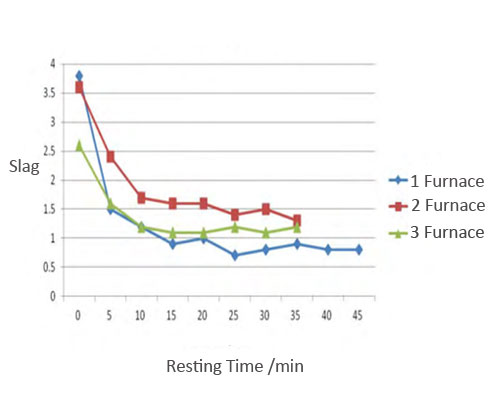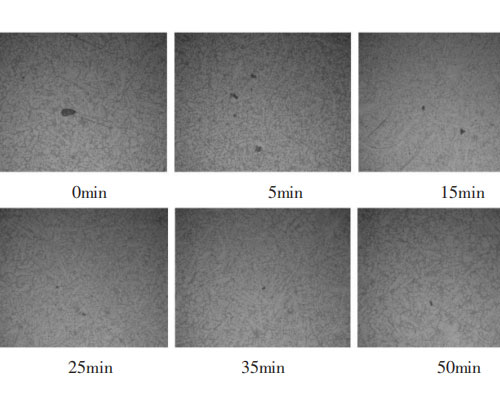The purification treatment technology of aluminum melt is the first key process that determines the application of aluminum alloy materials. It determines whether aluminum alloy materials have metallurgical defects and high-performance heritability, and dominates its application and development in various fields.
The company’s aluminum alloy melt purification treatment mainly adopts furnace flux refining and static slag removal processes. The static slag removal is based on the density difference between the non-metal oxide and the alloy liquid itself. In a certain period of time, the non-metal oxide and the alloy liquid are separated to achieve the purpose of purifying the aluminum liquid. This article aims to determine the best standing time of molten aluminum through experiments.
The test furnace is a 20-ton aluminum alloy static furnace. The purpose of the static furnace is to remove slag and stand still and fine-tune the composition of the molten aluminum mixture in the smelting furnace and aluminum scrap furnace, thereby purifying the aluminum alloy liquid and providing high-quality aluminum alloy liquid for the next station.
The molten aluminum in the smelting furnace and the aluminum scrap furnace enters the static furnace through the casting launder according to the proportion, and the temperature is raised. When the temperature reaches 740℃ or higher, 20kg of slag cleaning agent is added to the powder sprayer, and the slag cleaning agent is blown into the aluminum alloy with nitrogen. The inside of the liquid undergoes a melt purification operation, and the slag is removed after 15 minutes of spraying. After the slag removal is completed, start to stand still.

The slag inclusion value of the molten aluminum is higher just after the slagging off in the standing furnace. With the extension of the standing time, the slag inclusion value of the molten aluminum shows a gradual decrease. When the standing time is 15 minutes, the slag inclusion value of molten aluminum basically reaches a low value, and when it is greater than 15 minutes, the slag inclusion value of molten aluminum is basically stable with a small change.
As the standing time increases, the slag inclusion defect rate of the alloy shows a downward trend. The slag inclusion defect rate is at the maximum after the slag removal of the standing furnace is completed. In the first 25 minutes, the defect rate dropped significantly, and then basically stabilized, with a defect rate of 0.05%.
When the standing time is 15 minutes, the slag inclusion value of molten aluminum basically reaches a low value, and when it is greater than 15 minutes, the slag inclusion value of molten aluminum is basically stable. When the standing time is more than 25min, the defect rate is basically stable. When the molten aluminum is standing for more than 25 minutes, the cleanliness of the molten aluminum can reach a better state, that is, the molten aluminum can be allowed to stand for at least 25 minutes before being transferred to the next station.

